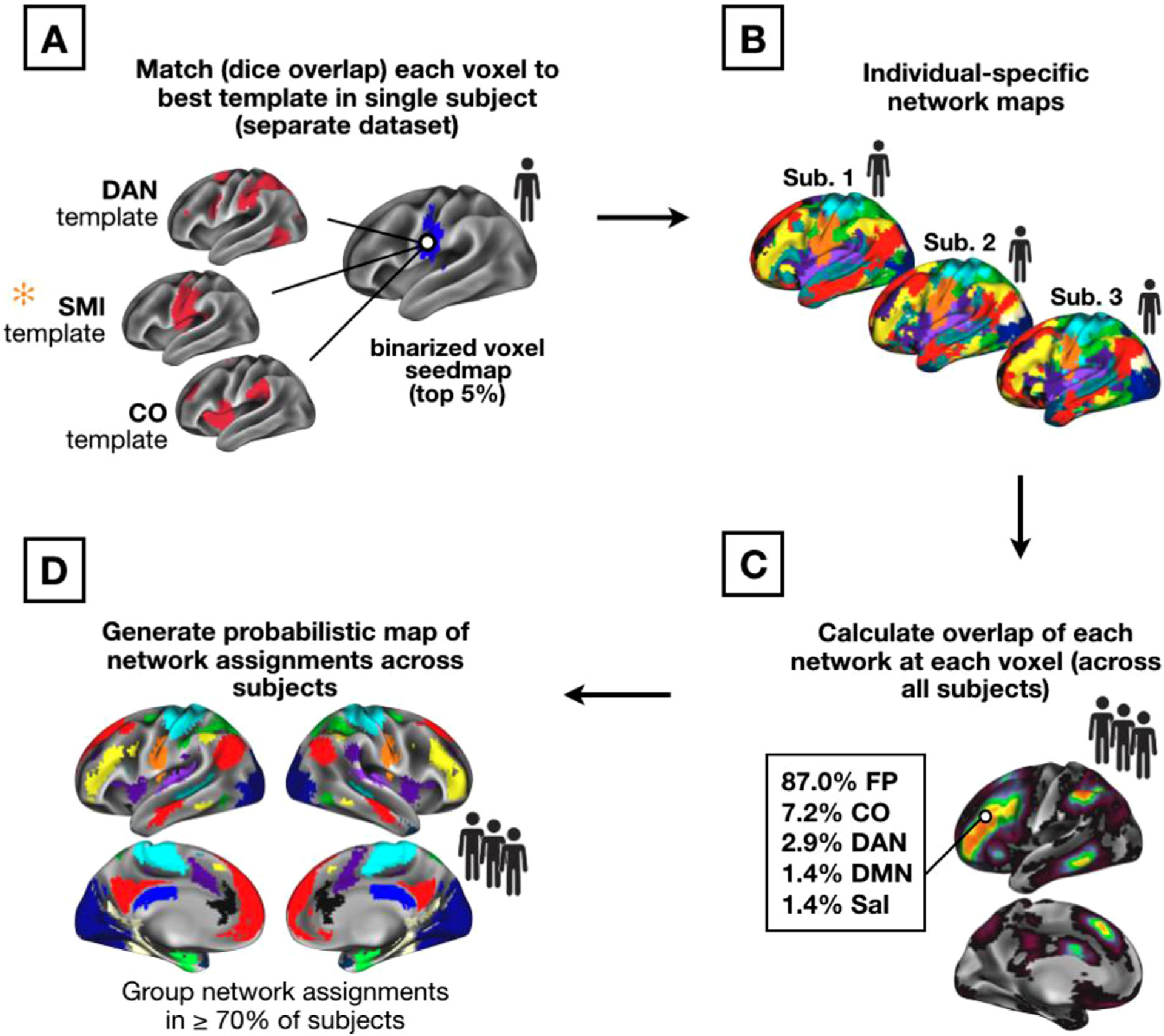Fig. 1.

Template-matching procedure (A) and creation of probabilistic network maps (B–D). A set of group-average network templates were created from the WashU dataset. These group-average templates were binarized at the top 5% of connectivity values. Next, for each single individual in the Dartmouth and replication datasets, a voxelwise seedmap was created for all gray matter voxels. Seedmaps were thresholded at the top 5% of values across voxels. The individual’s voxel-level binarized map was then iteratively compared (by Dice overlap) with each group-average network template, and the network with the highest Dice coefficient was assigned to the voxel (A). Once all voxels were assigned in all subjects (B), the number of network assignments at each voxel were tallied across subjects (C) to generate probabilistic maps of networks. These probabilistic maps were then thresholded (D) to represent locations with network consensus in a large majority of subjects. Note that while all steps were performed in volume (Talairach) space, results are mapped onto a template surface for visualization purposes only.
